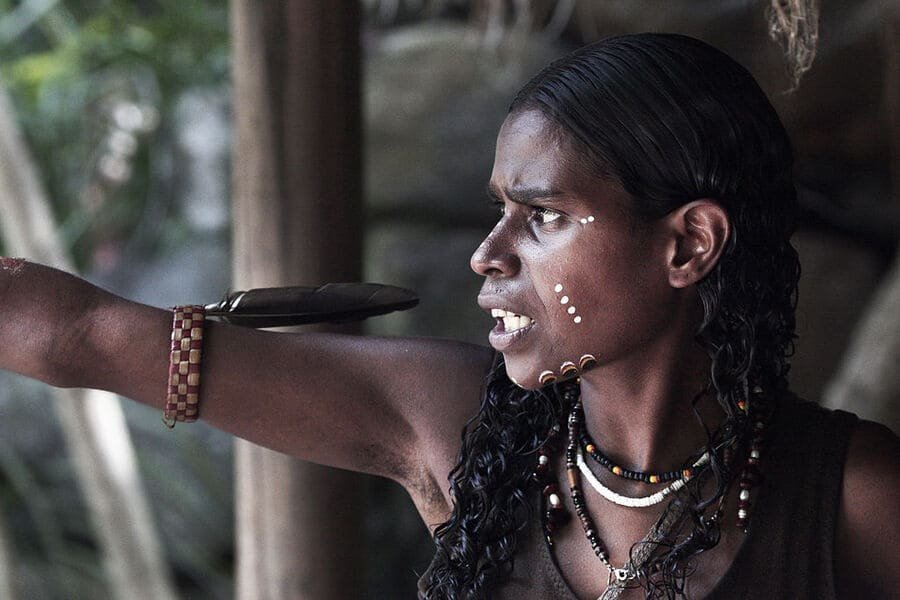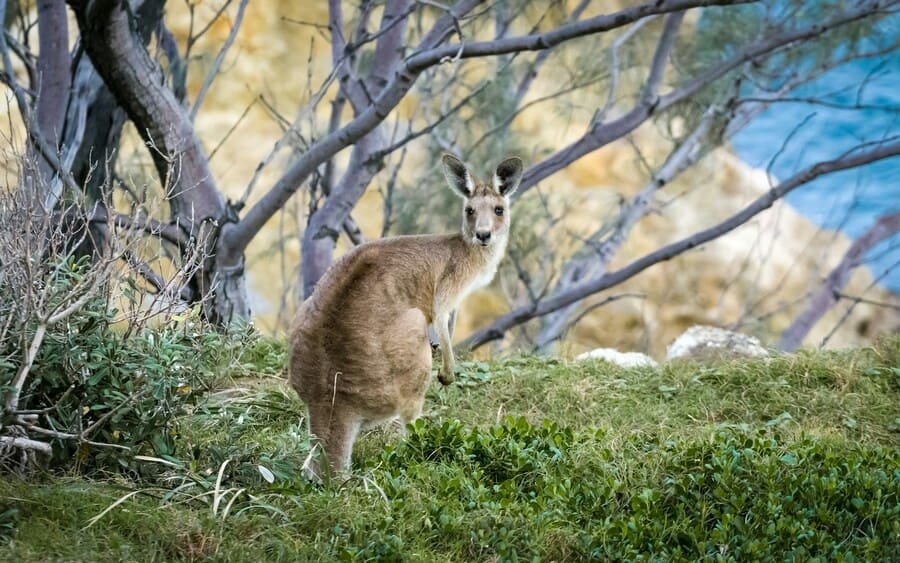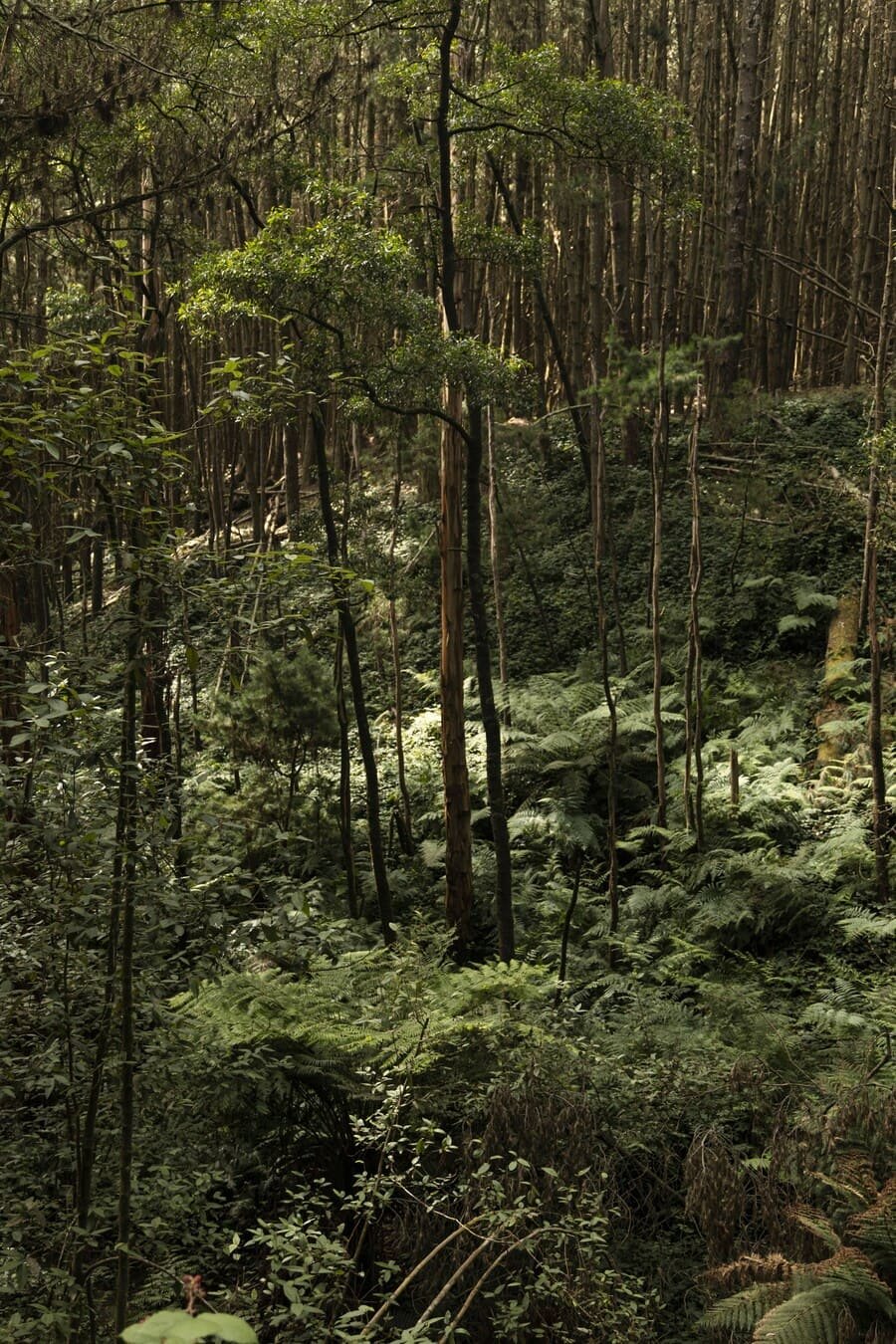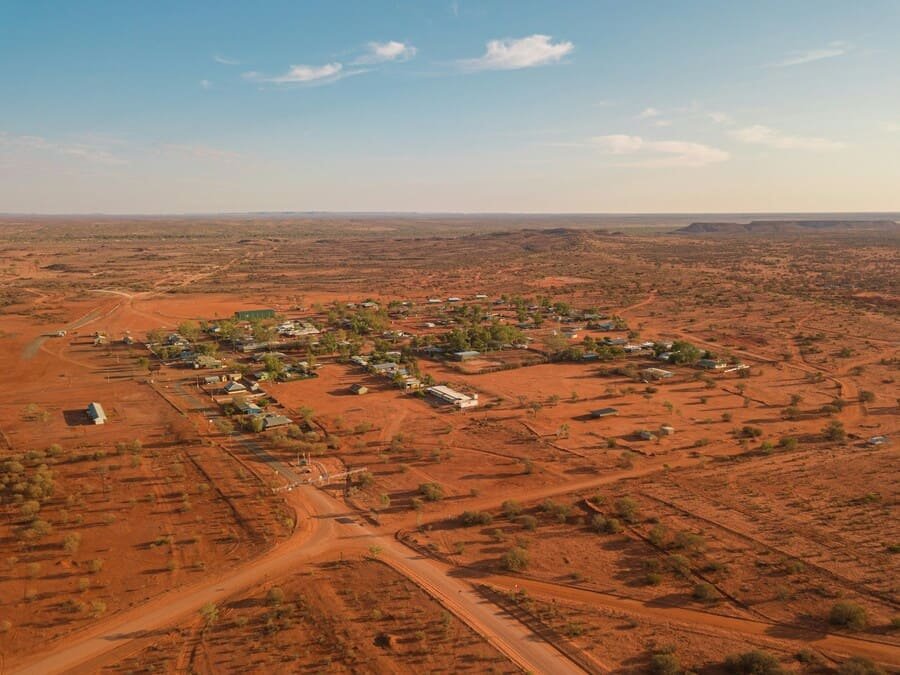Indigenous cultures across the world are rich repositories of centuries-old knowledge and wisdom, passed down through generations via oral traditions, art forms, and spiritual practices. In Australia’s Northern Territory, the Aboriginal communities have managed to preserve their unique cultural heritage despite centuries of colonization and oppression. Through the exploration of Dreamtime stories, traditional bush medicine, and dot painting art, visitors have the opportunity to examine into the deep-rooted connection to land and spirituality that defines Indigenous Australian culture.
Embarking on a journey to Australia’s Northern Territory is not just a physical adventure, but also a spiritual and cultural awakening. By immersing oneself in the vibrant traditions of the Aboriginal communities, one gains a greater appreciation for the resilience and tenacity of these ancient cultures. The stories of the Dreamtime, which explain the creation of the world and the spiritual significance of the land, provide a glimpse into the profound cosmology that underpins Indigenous belief systems.
While exploring the Northern Territory, visitors have the opportunity to witness the living history of the Aboriginal peoples, as they continue to practice traditional bush medicine techniques and create intricate dot paintings that serve as visual representations of their stories and beliefs. This firsthand experience not only fosters a deeper understanding of Indigenous Australian culture but also highlights the importance of preserving and honoring these invaluable traditions for future generations.
Table of Contents
Key Takeaways:
- Dreamtime Stories: Aboriginal communities in Australia’s Northern Territory pass down Dreamtime stories orally, depicting the creation of the world and teaching important values and beliefs.
- Traditional Bush Medicine: Indigenous Australians in the Northern Territory have a deep knowledge of traditional bush medicine derived from plants and natural resources, used for healing purposes.
- Dot Painting Art: The dot painting art technique is a significant form of cultural expression for Aboriginal communities, often representing stories, landscapes, and spiritual connections.
- Connection to Land: Indigenous Australian culture emphasizes a profound connection to the land, viewing it as a provider of sustenance, spiritual significance, and ancestral ties.
- Spirituality: The rich cultural traditions of Aboriginal communities in the Northern Territory reflect a deep sense of spirituality, encompassing beliefs in ancestral spirits, connections to the natural world, and ceremonies to honor the land.

The Land and Its People
The Northern Territory’s Aboriginal Nations
Nations in the Northern Territory of Australia have a deep connection to their land, which is reflected in their cultural traditions and practices. Each Aboriginal nation holds unique Dreamtime stories, traditional bush medicine knowledge, and intricate dot painting art that is passed down through generations. To explore the rich cultural heritage of these communities, consider launching on a guided tour like A guide to First Nations’ culture in Australia that immerses you in their way of life.
A Link to Country: Land and Identity
The relationship between the Indigenous peoples of the Northern Territory and their country is fundamental to their identity and spirituality. The land not only provides sustenance and shelter but also serves as a spiritual source of connection and belonging. Aboriginal communities often practice traditional ceremonies and rituals on their ancestral lands to maintain this deep bond with the land, further enriching their cultural heritage.
Aboriginal communities in the Northern Territory are diverse, with each group preserving its unique customs and dialects that are tied to specific geographic locations. Despite facing challenges such as demographic shifts and socio-economic disparities, these communities continue to uphold their traditions and cultural practices, showcasing resilience and pride in their heritage.
Demographics and Distribution of Communities
One of the remarkable aspects of Aboriginal communities in the Northern Territory is their resilience and adaptability in the face of modern challenges. With a population that is spread across remote outback regions and urban centers, Indigenous Australians continue to practice their cultural traditions while embracing aspects of modern life. This unique blend of tradition and contemporary living reflects the ongoing evolution of Indigenous cultures in the region.
Dreamtime Stories: The Bedrock of Cultural Identity
Once again, we probe into the fascinating world of Aboriginal traditions, this time exploring the profound significance of Dreamtime stories in indigenous Australian culture. These ancient tales, passed down through generations, hold the key to understanding the spiritual beliefs and cultural identity of the Aboriginal communities in Australia’s Northern Territory. Kakadu National Park, a UNESCO World Heritage Site, is a living testament to the enduring legacy of Dreamtime narratives.

The Concept of Dreamtime
Stories woven into the fabric of Dreamtime depict the creation of the world and all living beings by ancestral spirits. These narratives explain the interconnectedness of all aspects of life and the deep relationship between humans, nature, and the spiritual realm. To the Aboriginal people, the Dreamtime is not merely a distant past but a living presence that continues to shape their beliefs, values, and practices.
Oral Traditions and Storytelling
Cultural transmission of Dreamtime stories primarily relies on oral traditions and storytelling, with elders serving as custodians of this sacred knowledge. Through the art of storytelling, the wisdom of the Dreamtime is imparted to younger generations, fostering a sense of belonging and preserving cultural heritage. The power of narrative in indigenous cultures transcends mere entertainment, serving as a profound educational tool.
Plus, the oral tradition of storytelling not only imparts knowledge of the Dreamtime but also instills important values such as respect, responsibility, and stewardship of the land. It reinforces the interconnectedness of all living beings and teaches valuable lessons about the consequences of actions, fostering a deep sense of environmental awareness and conservation among Aboriginal communities.
The Educational Role of Dreamtime Narratives
Cultural teachings within Dreamtime stories extend beyond mere myths and legends, serving as a foundational source of education for Aboriginal communities. These narratives offer valuable lessons on morality, ethics, and social norms, guiding individuals on how to live in harmony with nature and each other. The educational role of Dreamtime narratives goes beyond academic learning, encompassing a holistic approach to understanding life’s complexities.

Understanding the profound significance of Dreamtime stories in indigenous Australian culture is crucial in appreciating the rich heritage and spiritual connection of Aboriginal communities. These narratives not only serve as a window into the past but also provide a guiding light for the present and future, shaping the cultural identity and values of the indigenous peoples of Australia’s Northern Territory.
Art as Expression of Heritage
The Tradition of Dot Painting
Keep in touch with the rich cultural traditions of Aboriginal communities in Australia’s Northern Territory through the mesmerizing art form of dot painting. A practice deeply rooted in Indigenous Australian heritage, dot painting serves as a visual representation of Dreamtime stories and connection to the land. The careful application of tiny dots, often in earthy tones, conveys intricate narratives and spiritual beliefs that have been passed down through generations.
Symbolism in Indigenous Artwork
Painting can convey more than just aesthetic beauty; it can carry layers of meaning and symbolism deeply rooted in Indigenous Australian culture. Each element depicted in traditional Indigenous artwork, whether it be animals, symbols, or patterns, holds significance and tells a story. The use of vibrant colors, geometric shapes, and intricate designs reflects the spiritual and cultural values that shape the Aboriginal way of life.
Contemporary Aboriginal Art and Global Recognition
One cannot overlook the growing recognition and influence of contemporary Aboriginal art on the global stage. Artists from Indigenous communities in the Northern Territory are gaining acclaim for their innovative interpretations of traditional art forms, blending ancient techniques with modern influences. This fusion of the old and the new not only preserves cultural heritage but also fosters a deeper understanding and appreciation of Indigenous Australian art worldwide.
Another aspect worth considering is the importance of protecting artistic intellectual property in Indigenous artworks. Global demand for Aboriginal art has led to issues of exploitation and cultural appropriation. It is crucial to respect and honor the intellectual heritage of Indigenous artists, ensuring that their work is credited and compensated fairly. By supporting ethical practices in the art industry, we can help preserve the authenticity and integrity of Indigenous cultural expressions.

Spiritual Practice and Totemic Beliefs
Connection to Ancestral Beings
Your journey to Australia’s Northern Territory will immerse you in the profound connection that Indigenous Australians have with their ancestral beings. On their land, Dreamtime stories are not just myths or legends but living truths that guide every aspect of daily life. The Aboriginal communities view themselves as custodians of the land, entrusted with the responsibility to preserve the stories and values passed down by their ancestors. This connection to ancestral beings is deeply rooted in the spiritual and cultural identity of Indigenous Australians, shaping their worldview and beliefs.
The Role of Ceremony and Ritual
The Indigenous Australian communities in the Northern Territory place great importance on ceremony and ritual as a means to strengthen their spiritual connection to the land and ancestral beings. These rituals are not mere performances but sacred acts that reaffirm their place in the world and honor the traditions of their ancestors. The ceremonies often involve singing, dancing, and storytelling, creating a powerful bond between the community members and their spiritual heritage. The role of ceremony and ritual is vital in preserving the cultural practices that have been passed down through generations.
With the passage of time, the significance of ceremony and ritual remains integral to the cultural identity of Indigenous Australian communities. These practices serve as a means to maintain a harmonious relationship with the land and ensure the continued connection to ancestral beings. Through ceremonies and rituals, the Indigenous Australians not only pay homage to their heritage but also seek guidance and blessings for the future, reinforcing the bonds that unite them as a community.
Sacred Sites and Their Conservation
The Northern Territory of Australia is home to sacred sites that hold great spiritual and cultural significance for the Indigenous communities. These sites are not just landmarks but repositories of ancestral knowledge and wisdom, embodying the stories and beliefs that define their existence. The conservation of these sacred sites is a priority for Indigenous Australians, as they recognize the importance of preserving their cultural heritage for future generations to come.

Their commitment to sacred sites goes beyond mere protection of physical structures; it encompasses a deep reverence for the spiritual essence that imbues these places with significance. By safeguarding these sites, Indigenous Australians ensure that the spiritual connection to their land and ancestral beings remains intact, serving as a testament to their enduring legacy. Ancestral practices and beliefs are intricately intertwined with the sacred sites, underscoring the profound respect and reverence that Indigenous Australians hold for their heritage.
Traditional Knowledge and Bush Medicine
The Use of Native Flora
Traditional bush medicine in Australia’s Northern Territory is deeply rooted in Aboriginal culture & tradition, passed down through generations as a sacred form of healing. The Indigenous communities have a profound understanding of the native flora and its medicinal properties, harnessing the power of plants for various ailments and spiritual purposes. From eucalyptus leaves to Kakadu plum, each plant holds significance in their healing practices.
The Aboriginal culture & tradition emphasizes the holistic approach to well-being, where physical, mental, and spiritual health are interconnected. The intricate knowledge of bush medicine not only addresses physical symptoms but also aims to restore balance and harmony within the individual and the community as a whole.
Preserving and sharing the wisdom of traditional medicine is important for the continuation of Indigenous Australian culture, ensuring that future generations inherit this invaluable heritage.
The Passing of Medicinal Knowledge
The transmission of medicinal knowledge within Aboriginal communities is a sacred and intricate process, deeply woven into the fabric of their cultural practices. Elders play a crucial role in passing down ancient healing rituals, plant identification, and treatment methods to the younger generations, ensuring the preservation of this invaluable heritage.
The oral traditions of storytelling and hands-on experience are at the core of this transfer of knowledge, creating a strong bond between the elders and the youth. Through apprenticeship and observation, the next generation learns the art of identifying, harvesting, and preparing medicinal plants, upholding the legacy of their ancestors.

This intergenerational exchange not only sustains the practice of traditional medicine but also strengthens the cultural identity and resilience of Indigenous communities in the face of modern challenges.
Challenges to Traditional Healing Practices
With the encroachment of modernization and western medical practices, traditional healing methods face significant challenges in maintaining their authenticity and effectiveness. The availability of pharmaceutical alternatives, limited access to traditional lands for gathering medicinal plants, and the erosion of cultural practices pose threats to the preservation of this ancient knowledge.
Despite these challenges, Indigenous communities are actively engaged in advocacy efforts to protect their cultural heritage and traditional healing practices. Through community-led initiatives, education programs, and collaborations with researchers and policymakers, they strive to safeguard their medicinal knowledge and ensure its continuation for future generations.
Healing through traditional medicine not only addresses physical ailments but also nurtures the spiritual connection to the land and the ancestors, enhancing the well-being and resilience of Indigenous Australian communities.
Indigenous Languages: Dialects of the Northern Territory
Language Diversity in the Northern Territory
Not only is the Northern Territory known for its stunning landscapes and rich cultural traditions, but it is also a region of immense linguistic diversity. With over 100 distinct Indigenous languages spoken in the Northern Territory, each community holds a unique linguistic heritage that contributes to the cultural tapestry of the region. These languages are more than just means of communication; they are repositories of knowledge, history, and connection to the land.
On the vast expanse of the Northern Territory, different dialects have developed within various Indigenous communities, reflecting the diverse cultural practices and beliefs of each group. The preservation of these languages is crucial to maintaining the identity and heritage of Indigenous Australians, ensuring that their voices and stories continue to be heard for generations to come.
To illustrate the scale of linguistic diversity, consider the Dreamtime stories shared among Aboriginal communities. These stories are orally passed down through generations in their native languages, emphasizing the importance of preserving and revitalizing these linguistic traditions to safeguard ancient knowledge and cultural practices.
Efforts in Language Revitalization
To support the preservation and revitalization of Indigenous languages in the Northern Territory, various initiatives and programs have been implemented. Efforts include language documentation projects, community language classes, and partnerships between schools and local elders to incorporate Indigenous languages into mainstream education. These initiatives are important in nurturing linguistic diversity and ensuring that Indigenous languages remain a vibrant part of Australia’s cultural heritage.
Moreover, language revitalization efforts are not just limited to spoken language but also extend to written forms, such as dot painting art which incorporates symbols and patterns that convey stories and meanings. By integrating traditional language practices into contemporary art forms, Indigenous communities are preserving their linguistic heritage in innovative and accessible ways.
Language as a Living Archive of Culture
Diversity of Indigenous languages in the Northern Territory serves as a living archive of cultural knowledge and history, encapsulating the beliefs, practices, and worldviews of Indigenous communities. These languages not only convey everyday communication but also hold intricate details about traditional bush medicine, Dreamtime stories, and kinship systems. By safeguarding and promoting Indigenous languages, communities are actively preserving their cultural identity and passing on invaluable heritage to future generations.

Indigenous languages are more than tools of communication; they are integral to the identity and spirituality of Indigenous Australians. Through continued efforts in language revitalization and preservation, the Northern Territory is embracing its linguistic diversity as a cornerstone of its living heritage, enriching the cultural fabric of the region.
Challenges of Modernity and Cultural Adaptation
The Impact of Colonization
All indigenous communities across Australia have been profoundly affected by the legacy of colonization. With the arrival of European settlers, traditional customs and beliefs were systematically suppressed, leading to a loss of cultural identity and disruption of ancestral practices. Dreamtime stories, traditional bush medicine, and dot painting art, which once defined the rich cultural heritage of Aboriginal communities in the Northern Territory, were threatened with extinction.
The imposition of Western values and the forced assimilation of Indigenous peoples into mainstream society created a ruptured sense of belonging and connection to their land. The intergenerational trauma caused by colonization continues to reverberate through Indigenous communities, impacting mental health, social cohesion, and overall well-being.
Despite these challenges, Aboriginal communities in the Northern Territory are resilient and determined to reclaim and preserve their cultural traditions. Through education, advocacy, and cultural resurgence initiatives, efforts are being made to revitalize and pass on the knowledge of Dreamtime stories, traditional bush medicine, and dot painting art to future generations.
Land Rights and Self-Determination
Land has always held profound spiritual and cultural significance for Indigenous Australian communities. The fight for land rights and self-determination has been central to the preservation of indigenous traditions in the Northern Territory. Through legal battles and advocacy, Aboriginal communities have secured some rights to their ancestral lands, enabling them to practice their cultural traditions and maintain a connection to country.
This ongoing struggle for recognition and autonomy is necessary in ensuring the survival and flourishing of Indigenous cultures. By asserting their rights to land and self-determination, Aboriginal communities in the Northern Territory are reclaiming their identities and asserting their sovereignty over their traditional territories.

Economic Development vs. Cultural Integrity
With the increasing pressures of modernization and economic development in the Northern Territory, Indigenous communities are faced with the challenge of balancing economic opportunities with the preservation of their cultural integrity. The rapid urbanization and industrialization of traditional lands have posed a threat to the sustainability of indigenous traditions and practices.
Integrity must be maintained in navigating the complexities of economic development, ensuring that the cultural heritage of Aboriginal communities is not compromised or exploited for commercial gain. Balancing the need for economic empowerment with the preservation of cultural integrity is crucial in fostering a sustainable future for Indigenous Australian communities in the Northern Territory.
Preserving Culture: Education and Community Initiatives
Indigenous Cultural Education in Schools
To ensure the preservation of Indigenous traditions and cultural heritage, education plays a crucial role. Schools in Australia’s Northern Territory are actively incorporating Aboriginal cultural knowledge into their curriculum, providing students with opportunities to learn about Dreamtime stories, traditional bush medicine, and dot painting art. By integrating these teachings into the educational system, the younger generations are able to develop a deeper understanding and appreciation for the rich cultural traditions of Aboriginal communities.
Education on Indigenous culture in schools not only serves to educate students but also helps in fostering respect and understanding towards Indigenous Australians. It promotes cultural awareness and sensitivity, creating a more inclusive and harmonious society where the heritage of Aboriginal communities is valued and celebrated.
Through Indigenous cultural education in schools, future generations are equipped with the knowledge and understanding needed to continue preserving and passing on these important traditions, ensuring the rich cultural heritage of Aboriginal communities remains alive and vibrant.
Community-Led Preservation Projects
On a community level, various initiatives and projects are being led by Indigenous communities themselves to preserve their cultural heritage. These projects often focus on reviving traditional practices, such as language revitalization, ceremonial rituals, and craftsmanship, that are integral to maintaining the authenticity of Indigenous traditions.
Preservation efforts led by communities are imperative in ensuring that Indigenous knowledge and practices are passed down to future generations. By actively engaging in these preservation projects, Indigenous communities take ownership of their cultural heritage and work towards safeguarding it for the benefit of their community and the broader society.
Cultural Tourism and its Impact
As cultural tourism continues to grow in popularity, there is a significant opportunity to showcase and promote Indigenous Australian culture to a global audience. The Northern Territory, with its rich cultural traditions and strong connection to land and spirituality, offers a unique experience for tourists seeking to learn about Indigenous heritage. Community involvement in cultural tourism initiatives not only provides economic benefits but also serves as a platform for sharing and preserving Indigenous traditions.
Tourism that is respectful and sensitive to Indigenous culture can have a positive impact by raising awareness and appreciation for Aboriginal heritage. By engaging with Indigenous communities in a meaningful and respectful way, cultural tourism can contribute to the preservation and promotion of Indigenous traditions, while also creating opportunities for economic and social development within these communities.
Global Perspectives and Indigenous Solidarity
The Northern Territory in an International Context
Perspectives on Indigenous culture in Australia’s Northern Territory extend beyond national borders. The rich traditions of Aboriginal communities, including Dreamtime stories and dot painting art, have captured the interest of people worldwide. The unique connection to land and spirituality that defines Indigenous Australian culture resonates with audiences globally, highlighting the importance of preserving these heritage practices.

The Northern Territory serves as a focal point for international discussions on Indigenous rights and cultural heritage preservation. Visitors from around the world come to learn about traditional bush medicine and immerse themselves in the ancient wisdom passed down through generations. This exchange of knowledge and practices fosters a sense of solidarity among Indigenous peoples globally, emphasizing the value of cultural diversity.
As a hub for Indigenous cultural experiences, the Northern Territory plays a significant role in promoting cross-cultural understanding and appreciation. By showcasing the depth and beauty of Aboriginal traditions, the region contributes to a greater awareness and respect for Indigenous cultures worldwide, fostering collaboration and mutual respect.
Sharing Knowledge and Practices
An crucial aspect of Indigenous solidarity is the sharing of knowledge and practices. Through cultural exchanges and collaborative efforts, Indigenous communities in the Northern Territory have the opportunity to preserve and promote their heritage on a global scale. By engaging with visitors and international scholars, traditional bush medicine, Dreamtime stories, and dot painting art continue to thrive and evolve.
Indigenous Peoples’ Movements and the Role of the Northern Territory
Movements advocating for Indigenous rights and recognition have gained momentum globally, with the Northern Territory playing a crucial role in these initiatives. The region’s diverse Indigenous communities are at the forefront of these movements, advocating for their rights to land, cultural practices, and self-determination. The Northern Territory serves as a platform for collaboration and activism, driving change and empowering Indigenous peoples.
It is imperative that the international community supports Indigenous movements and initiatives in the Northern Territory, recognizing the enduring resilience and cultural richness of Aboriginal communities. By standing in solidarity with Indigenous peoples, we can work together to protect and preserve these invaluable cultural traditions for generations to come.
Summing up
Following this journey through Australia’s Northern Territory and immersing ourselves in the rich cultural traditions of Aboriginal communities, it becomes evident just how important it is to preserve and honor Indigenous traditions. The Dreamtime stories, traditional bush medicine practices, and intricate dot painting art all serve as critical components of Indigenous Australian culture, passed down through generations as a way of connecting to the land and spirituality. Understanding and respecting these traditions is not only a way to appreciate the history and heritage of the Aboriginal people, but also a means of fostering cultural diversity and unity in today’s society.
It is clear that the connection to land and the profound spiritual beliefs held by Indigenous Australians are what define their culture and identity. Through initiatives that support and promote the preservation of these traditions, such as cultural exchange programs, art exhibitions, and storytelling sessions, we can ensure that these invaluable aspects of Aboriginal heritage continue to thrive and be celebrated for years to come. By sharing and learning from Indigenous knowledge and practices, we can all gain a deeper appreciation for the world around us and the diverse cultures that make up our global community.
Lastly, the living heritage found in Australia’s Northern Territory is a testament to the resilience, creativity, and deep connection to the land that characterizes Indigenous Australian culture. As we strive to understand and preserve these traditions, we acknowledge the importance of honoring and respecting the rich history of the Aboriginal people. By continuing to support and engage with Indigenous communities, we can help ensure that their unique cultural practices and beliefs remain a vital part of Australia’s identity and serve as a source of inspiration and learning for generations to come.
Living Heritage – Preserving Indigenous Traditions in Australia’s Northern Territory FAQ
Q: What are Dreamtime stories in Aboriginal culture?
A: Dreamtime stories are oral narratives that explain the creation of the world and how ancestral beings shaped the land, animals, and plants. These stories are central to Aboriginal spirituality and cultural identity.
Q: What is traditional bush medicine used for in Aboriginal communities?
A: Traditional bush medicine is derived from plants, animals, and minerals found in the natural environment. It is used for healing physical, emotional, and spiritual ailments, passed down through generations within Aboriginal communities.
Q: How is dot painting art significant in Indigenous Australian culture?
A: Dot painting art is a traditional form of storytelling and visual expression for Indigenous Australians. Each dot carries meaning and represents elements of Dreamtime stories, cultural heritage, and connection to the land.
Q: How does Indigenous Australian culture emphasize a unique connection to land?
A: Indigenous Australian culture regards the land as a living entity, necessary to their identity and spirituality. The relationship to land is intertwined with traditions, ceremonies, and beliefs that have been passed down for thousands of years.
Q: How can individuals experience and learn about Aboriginal cultural traditions in Australia’s Northern Territory?
A: To learn about Aboriginal cultural traditions, individuals can participate in guided tours, cultural workshops, and community events offered by Indigenous organizations and cultural centers in the Northern Territory. These experiences provide insight into the rich heritage and traditions of Aboriginal communities.
Featured image by Simon Maisch on Unsplash







